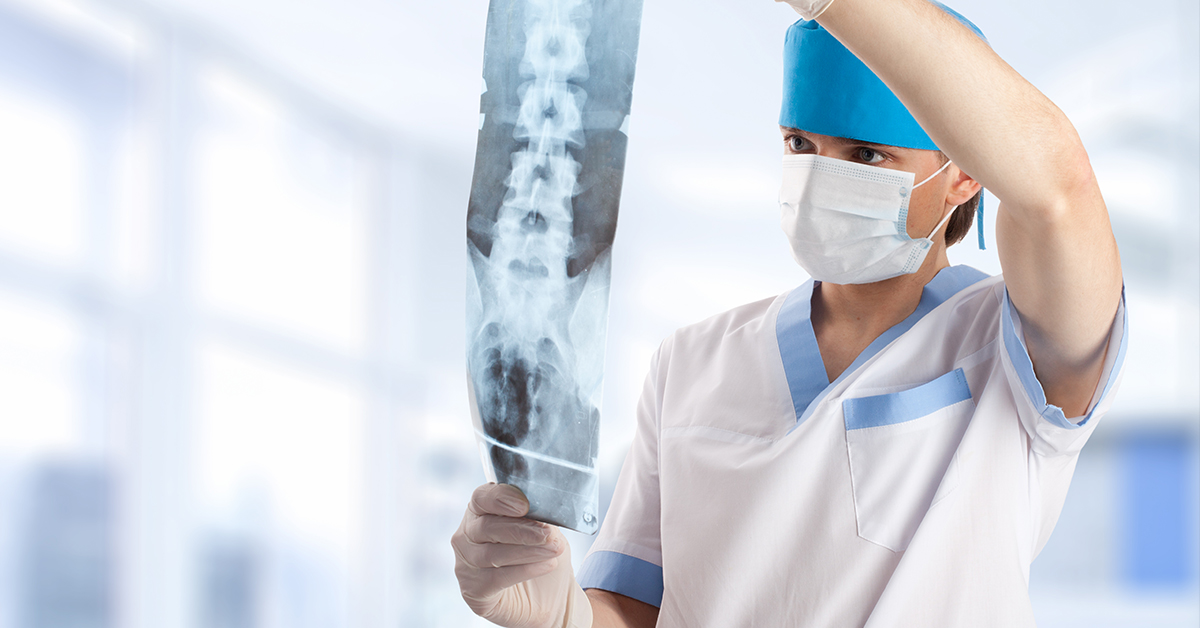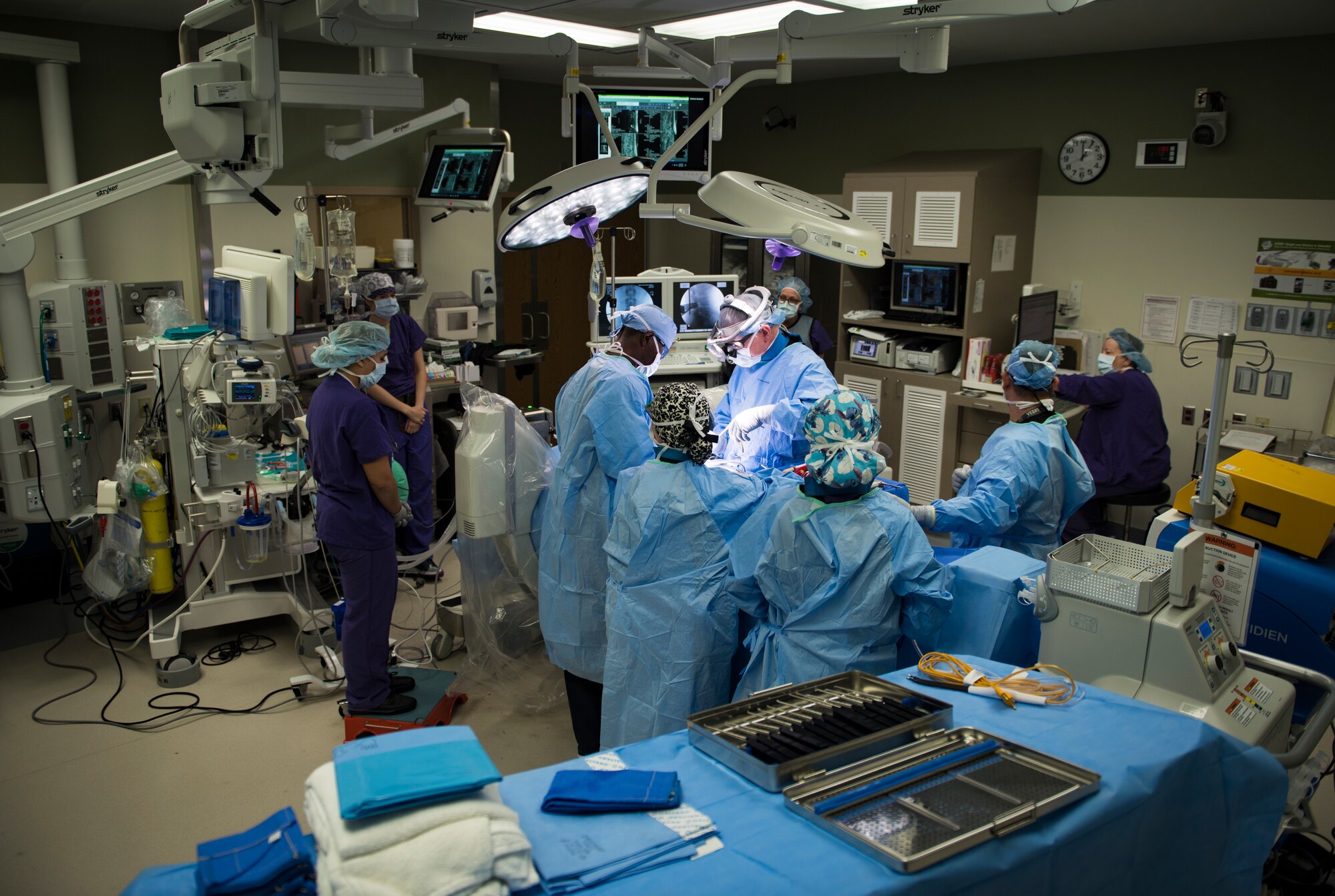Exactly how to Get ready for Visits to the Best Spine Surgeons in St Louis MO
Exactly how to Get ready for Visits to the Best Spine Surgeons in St Louis MO
Blog Article
Recognizing the Typical Spinal Column Issues That May Require Surgical Treatment
Conditions such as herniated discs, back stenosis, and degenerative disc disease not just impact mobility yet can also dramatically hinder quality of life. As we check out the various problems and their implications, it ends up being apparent that the decision-making procedure surrounding medical intervention is complicated and complex, raising essential questions concerning timing, risks, and results.
Herniated Discs
Herniated discs are a prevalent spine problem, typically arising from age-related degeneration or severe injury. best spine surgeons in st louis mo. This problem occurs when the soft internal product of a spinal disc extends via its outer layer, potentially pressing adjacent nerves. The resulting signs can consist of local pain, pins and needles, tingling, or weakness in the arm or legs, relying on the damaged location of the spine
Medical diagnosis normally entails an extensive clinical history and checkup, usually supplemented by imaging research studies such as MRI or CT scans. These diagnostic tools enable medical care professionals to assess the extent of the herniation and its influence on bordering frameworks.
Therapy alternatives for herniated discs vary from traditional measures, such as physical therapy and medication, to more invasive procedures. Numerous individuals discover alleviation via non-surgical strategies, which focus on pain administration and bring back feature. When conventional therapies fall short to alleviate symptoms or when neurological deficits arise, surgical intervention might be warranted.
Surgical options, including discectomy or spinal fusion, aim to ease pressure on the damaged nerves and recover back stability. The choice to seek surgery is usually made after cautious factor to consider of the individual's total wellness, extent of signs and symptoms, and action to previous therapies.
Spine Stenosis

Signs commonly intensify with activities that call for long term standing or walking, leading to a condition referred to as neurogenic claudication. Medical diagnosis usually entails imaging research studies, such as MRI or CT scans, which assist visualize the level of stenosis and recognize influenced areas.
Therapy alternatives for back constriction might begin cautiously, making use of physical treatment, discomfort monitoring approaches, and way of living alterations. Surgical treatments, such as decompression laminectomy or back blend, goal to eliminate stress on the back cable and nerves, consequently relieving discomfort and recovering feature.
Scoliosis
A significant number of people are impacted by scoliosis, a condition characterized by an unusual lateral curvature of the spine (best spine surgeons in st louis mo). This curvature can create in different forms, including idiopathic scoliosis, which arises without a well-known cause, or as a result of neuromuscular problems, genetic aspects, or degenerative illness. The seriousness of scoliosis can vary significantly, varying from moderate curves that might not need treatment to severe situations that can cause pain, respiratory system problems, and decreased top quality of life
Diagnosis is usually made through checkups and imaging researches such as X-rays, which assist assess the level of curvature and its progression. Therapy choices are determined based on the extent of the curvature, age of the individual, and potential for development. Non-surgical interventions consist of monitoring, supporting, and physical therapy. Medical intervention might become needed for clients with substantial curvature that is intensifying, or for those experiencing devastating signs. Surgical alternatives usually include spinal combination, which intends to fix the curvature and maintain the spine. Early medical diagnosis and intervention are crucial to handling scoliosis effectively and lessening possible problems.

Degenerative Disc Disease

DDD is usually an outcome of the all-natural aging procedure, but variables such as genes, way of life, and repetitive pressure can accelerate its start. Clients frequently report local pain in the lower back or neck, which might radiate to various other areas, such as the arm or legs. In severe instances, nerve compression can result in neurological signs and symptoms, including numbness, prickling, or weakness.
While conventional therapies, such as physical therapy and discomfort management, can relieve symptoms for several individuals, some might call for surgical treatment. Surgical alternatives, such as spine blend or artificial disc substitute, purpose to bring back security and alleviate pain by resolving the underlying problems created by DDD. An extensive analysis by a spinal column expert is necessary to identify one of the most ideal treatment technique.
Fractured Vertebrae
Fractured vertebrae represent a substantial concern in spinal column health and wellness, often resulting from trauma, weakening of bones, or various other degenerative click here for more info problems (best spine surgeons in st louis mo). These fractures can result in serious discomfort, loss of flexibility, and potential problems such as spine instability or neurological shortages. The device of injury typically includes either direct trauma, such as drops or automotive crashes, or the gradual weakening of bones due to conditions like osteoporosis
Diagnosis is generally verified with imaging researches, consisting of X-rays, CT scans, or MRIs, which disclose the level and kind of fracture. Treatment alternatives differ depending on the crack's intensity and the person's total health. Conventional monitoring might entail discomfort alleviation, remainder, and physical treatment; nevertheless, medical treatment might be necessary for displaced fractures, those causing spine instability, or when traditional measures fail.
Surgical approaches can consist of vertebroplasty or kyphoplasty, treatments targeted at easing and supporting the vertebra pain. In more severe instances, back blend may be indicated to restore architectural honesty. Appropriate and prompt treatment is vital in guaranteeing optimal recuperation and decreasing long-lasting complications related to broken vertebrae.

Conclusion
In recap, common spine issues such as herniated discs, spine constriction, scoliosis, degenerative disc illness, and fractured vertebrae can considerably harm lifestyle and necessitate medical intervention. While conservative therapies may give relief in numerous instances, serious or relentless signs often necessitate surgical alternatives to bring back feature and ease pain. Timely diagnosis and proper management are vital to enhance person outcomes and promote recuperation in people influenced by these debilitating conditions.
Spine constriction is a condition characterized by the narrowing of the back canal, which can lead to compression of the back cord and nerve roots. Surgical treatments, such as decompression laminectomy or back blend, objective to eliminate stress on the spinal cord and about his nerves, therefore minimizing discomfort and bring back feature. Surgical alternatives, such as spine fusion or synthetic disc replacement, purpose to bring back security and reduce pain by resolving the underlying problems triggered by DDD. Conservative management may include pain alleviation, rest, and physical treatment; nonetheless, medical treatment might be necessary for displaced fractures, those causing spinal instability, or when conservative steps stop working.
In summary, common back problems such as herniated discs, back constriction, scoliosis, degenerative disc condition, and broken vertebrae can dramatically harm top quality of life read what he said and demand medical intervention.
Report this page